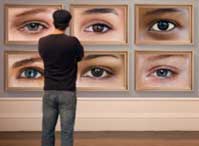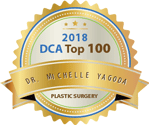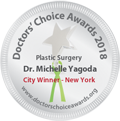 Most Mediterranean/Middle Eastern rhinoplasty (“nose job”) patients seek to improve the appearance of their nose without erasing their heritage and identity. Typically, requests include correcting a droop, lifting the tip, raising the bridge, narrowing the nostrils and enhancing the profile. It takes skill and sensitivity to achieve a cosmetic result that beautifies the face while respecting and preserving ethnicity.
Most Mediterranean/Middle Eastern rhinoplasty (“nose job”) patients seek to improve the appearance of their nose without erasing their heritage and identity. Typically, requests include correcting a droop, lifting the tip, raising the bridge, narrowing the nostrils and enhancing the profile. It takes skill and sensitivity to achieve a cosmetic result that beautifies the face while respecting and preserving ethnicity.
There are technical challenges when refining an ethnic nose that deserve special consideration. As a facial plastic surgeon, Dr. Yagoda is aware that Mediterranean and Middle Eastern people often have larger noses than Europeans. They often have a high dorsal “hump” and drooping tip. In addition, they may also have thicker skin (as do Hispanics, Asians, and Africans) and this makes refining the nasal tip more challenging.
About Rhinoplasty
Rhinoplasty is a cosmetic surgery procedure that improves the appearance of the outside of the nose. Typically, Mediterranean/Middle Eastern patients wish to remove a bump, lift and refine a drooping tip, and/or narrow the nostrils. While some cosmetic improvements can be made with non-surgical rhinoplasty using injectable fillers and implants, in Mediterranean and Middle Eastern patients, only plastic surgery can permanently reduce the size of an enlarged nose or lift a drooping tip.
During a rhinoplasty procedure, a facial plastic surgeon who is also an otolaryngologist or ENT (a specialist who cares for the ears, nose, and throat) may also correct any structural defects of the nose. Many people mistakenly believe that the size of the external nose predicts the amount of airflow. Not true! In Mediterranean and Middle Easterners, a deviated septum and/or enlarged turbinates may limit airflow. If done expertly, the end result of a rhinoplasty procedure will be a nose that not only looks better but works better too!
Because rhinoplasty can make such a dramatic difference in your appearance, because the nose has many intricate internal structures critical to its function, and because the procedure demands both excellent surgical skills and aesthetic judgment, Dr. Yagoda sees a number of patients in New York City who seek revisions of a previous procedure. Revision rhinoplasty can be challenging because the surgeon must work with the results of a previous procedure, creating a whole new layer of complication and potentially limiting the options for improvement. If you’re dissatisfied with a previous rhinoplasty, you’ll want to put yourself in the best possible hands.
Who Is a Candidate for Rhinoplasty?
Young adults often seek rhinoplasty and Dr. Yagoda is often asked, “How old do I have to be before I can have this procedure?” From a purely physical standpoint, the answer is, “anytime after puberty.” Adults can have rhinoplasty performed, whether it is functional or cosmetic surgery, at any age to improve their appearance or restore it following an injury.
The Procedure
Rhinoplasty or nose job surgery can be performed in Dr. Yagoda’s New York City office-based surgical facility or in a NYC hospital, under local anesthetic with IV sedation or under general anesthesia. This procedure takes between 45 minutes and two hours. The exact surgical technique is uniquely tailored by the plastic surgeon for each patient but most of the time, all incisions are made internally and there are no visible scars. In rare instances, an incision is made at the base of the nostrils and the incision is carefully hidden.
Recovery
You can return to work after your plastic surgery in about a week and you’ll be able to use a stationary bike or treadmill by the second week. By the third week, you can return to full activities. Although you’ll see immediate improvement, your nose’s shape and your profile will continue to refine over the next 12 to 18 months.
Risks
Like all surgery, rhinoplasty or nose job surgery has certain risks including infection, bleeding, and reaction to anesthesia. Other risks include structural damage to the nose. Dr. Yagoda will discuss these potential risks as well as the benefits of this plastic surgery procedure in full during your consultation in her New York City office.
To determine if rhinoplasty might be right for you, call our NYC office to schedule your complimentary consultation with facial plastic surgeon, Dr. Yagoda.
Read about Dr. Yagoda’s Integrative Post Operative Care Program
Flying In
Dr. Yagoda’s patients come from all over the world. From Qatar to Quebec, we can help you get here from abroad.


































